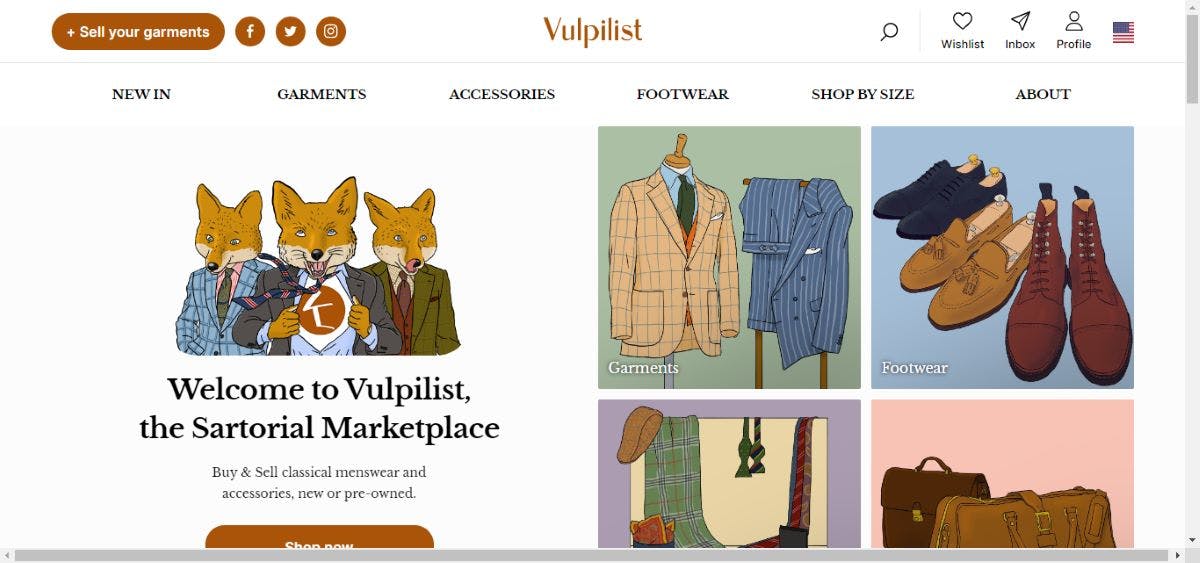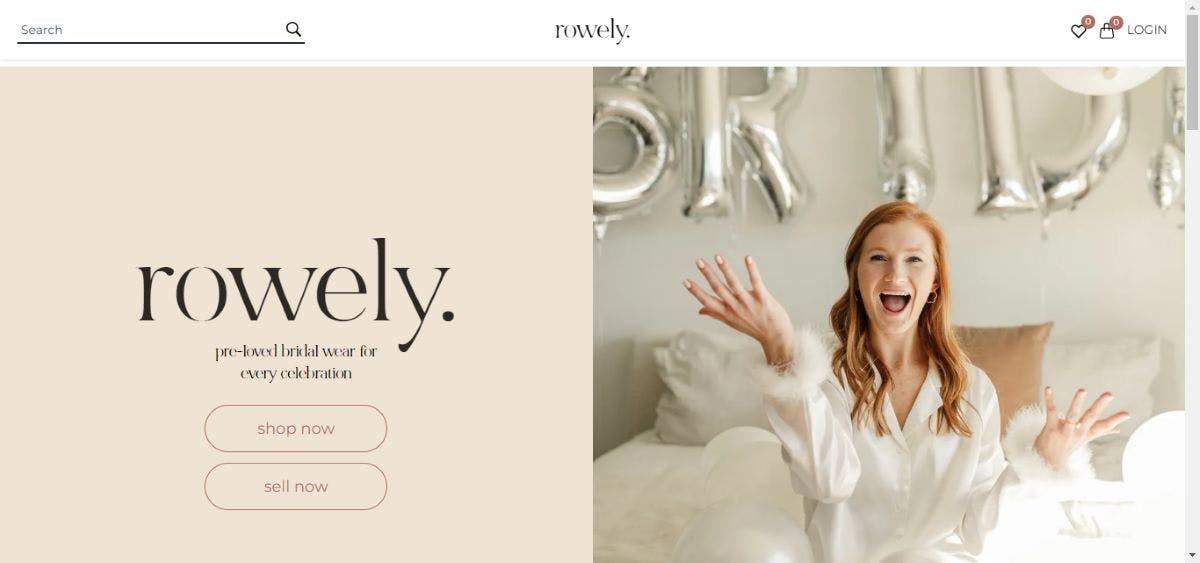How to build a website like Vinted
Vinted is an online marketplace for buying, selling, and swapping second-hand clothing and accessories. This guide explores how you can build your own marketplace like Vinted – from designing and building your website to scaling your business.
Established in 2008 by Milda Midkute and Justas Janauskas, Vinted has come a long way from the forum-like website for peer-to-peer clothes trading.
Originally built to help one co-founder get rid of excess clothes, the Lithuanian-based company now serves over 75 million members in 16 countries and counting from its 5 offices in Vilnius, Berlin, Prague, Amsterdam, and Utrecht.
It’s no wonder Vinted’s most recent valuation was $4.5 billion.
The success of Vinted and other famous online marketplaces like Airbnb, Etsy, and Fiverr has shown that the marketplace model is not only scalable but can also be applied to almost any industry. This shows that the collaborative economy has great potential—with its size already at $15 billion and expected to grow to a market size of $335 billion by 2025.
Marketplace businesses like Vinted scale so well because they don’t need to own the inventory. The clothes sold on Vinted are owned by their millions of sellers, not the company. This makes it possible to build a big business without heavy initial investment. However, building a successful marketplace takes a lot of work. You’ll need a sound strategy, an understanding of users’ needs both on the seller and buyer side, as well as a willingness to learn and iterate as you go. This article gives a high-level overview of all that, using Vinted as a focal point.
Vinted has been incredibly successful because of its user-friendly interface, a wide selection of second-hand clothing, and different helpful features like free shipping, discounts, and rewards. Moreover, Vinted makes it easy for customers to look for specific items, make offers on clothing, and even negotiate prices with sellers. All this makes for a flexible shopping experience. Let’s look at how a business like Vinted works in a bit more detail.
Vinted is an online marketplace that allows people to buy, sell, and swap second-hand clothing and accessories. It’s a great way to earn money by selling clothes you no longer love, or save money by buying gently-used items at a fraction of retail prices.
To sell on Vinted, members first need to create an account. After that, sellers can list clothing items in several categories like men’s, women’s, and children’s clothing. The sellers must photograph the listed items and write detailed descriptions of what they are. Afterward, the listings can show up on the news feeds of other users who can save apparel to their favorites and follow sellers.
Buyers can search and filter the large selection of clothing items from sellers. When a buyer finds what they like, they are requested to create an account. Then, they can either purchase the item for the quoted price or make an offer below the asking price. This gives the seller the option to accept the offer, reject it, or give a counteroffer. All of the communication involved happens on-site, through the website’s messaging system.
Once a sale is made, Vinted will generate a prepaid shipping label for the seller, who must pack the selected items and ship them off with the label on the package. Payment is handled securely through the website, and buyers handle shipping costs. Once the buyer receives the item and confirms its condition, the seller receives the payment. The buyer is also asked to review the seller.
Vinted is a great example of a community-driven marketplace. Many of its members use Vinted both to buy and sell clothing, and a sense of community and trust between members is critical to its success. To that end, Vinted incorporates some social networking features into its platform: users can create profiles, connect with other members, follow sellers, and like, comment on, and share listings.
Vinted uses a combination of several marketplace business models to stay profitable.
Basic use of the website is free, and Vinted doesn’t charge any commission from its sellers. However, customers will need to pay a commission on every purchase, which Vinted calls a buyer protection fee. In the US, this buyer protection fee is fixed at $0.70 on all offerings and an additional 5% fee is paid on the total sale price. It protects buyers from things like damaged items and fraud.
Vinted also uses featured listings and ads through spotlights and bumped offers as additional revenue streams. These deals give the sellers a way to improve the visibility of their items for a few days. This means they will appear on users' feeds for a fee.
Lastly, third-party ads also add to the revenue stream of Vinted—advertisers are offered a self-service platform where they can create campaigns and register subscribers.
Below are some online marketplaces similar to Vinted that can be considered competitors:
- eBay: eBay is an e-commerce platform and consumer-to-consumer marketplace where users can get just about any item bought or sold like clothes, electronics, and more. Unlike Vinted it is not solely a consumer-to-consumer platform and also supports business-to-consumer sales.
- Poshmark: Poshmark is a community-driven marketplace like Vinted for buying and selling fashion online. It was created by Manish Chandra and has features for negotiating prices and creating a virtual closet.
- Grailed: Grailed is another peer-to-peer marketplace for clothing. The platform stands out for its focus on selling only luxury brands.
- ThredUp: ThredUp is an online thrift store for secondhand clothes, similar to Vinted. It also tries to focus on well-known brands.
- Depop: Depop was founded by Simon Beckerman as an incubator project in Italy. The platform is becoming more popular in countries like the UK and the USA for its heavy focus on its social media features, like building a community of followers who engage with providers’ items.
- Research: Researching your target audience and competitors is the first step to creating a successful Vinted alternative. Analyze what features Vinted offers and which ones their customers like the most. Also, find gaps and areas for improvement within the market. You can then use these insights to make a unique offering. Here, you can read more about validating your marketplace idea.
- Develop your first marketplace product: Now it’s time to differentiate your business from Vinted by developing your unique product offering. This can be anything from offering a wider selection of products, to better customer service, or even improving the delivery options. Start with a Minimum Viable Platform and add features as you learn more about your specific audience.
- Create a strong value proposition: Your value proposition needs to resonate with your target audience. Make sure you understand what your marketplace offers for both user groups – and that you communicate it effectively.
- Find the right growth channels: Combine online and offline marketing techniques to promote your business. This could include sending out press releases, developing an email marketing campaign for acquired leads, or running targeted ad campaigns. Here’s how you can find the right growth strategies for your marketplace.
- Build a community. Engaged users who feel a strong connection to each other and your platform could be your biggest competitive advantage.
There are many options to think about when trying to build our Vinted-style website.
You can:
- Build a marketplace entirely from scratch. This will entail creating the code for all the features your marketplace needs. You’ll also need to choose your tech stack and set up the marketplace app framework and database. This can be incredibly time-consuming and overall not worth it. Whether you’re a developer yourself or employ an IT team, the bulk of your budget will go into coding, debugging, and managing marketplace basics. So make sure you’re ready to take on all these duties before using this method.
- Build a marketplace with WordPress. You can also use Wordpress to build your marketplace with plugins and themes that can be bought separately and installed on top of Wordpress. These will allow you to modify the basic functionality of WordPress to support your e-commerce implementations. Though faster and cheaper than building from scratch, this can still take a lot of time, and the end result might not be as smooth and reliable as you’d hope.
- Build a marketplace on top of open-source software. Use an open-source solution that you can download, modify, and host on your own servers. This method costs less than building from scratch but you’ll still need considerable developer knowledge to build and maintain it. The developer experience can leave a lot to be desired.
- Build with a combination of no-code tools. Building with different no-code tools you’re familiar with can help create very specific functionality and the exact layout you’re going for on your marketplace website. You will need to have a good understanding of marketplace functionality and all the tools needed to achieve it. Learning to use all the no-code tools can take a considerable amount of time.
- Build with a dedicated no-code marketplace SaaS tool. A software-as-a-service tool can make building your marketplace platform a breeze and ensure quick launch. Hosting is also included with SaaS no-code tools for marketplaces. The only issue is your ability to customize your platform will be limited.
- Develop a marketplace on top of an API-based marketplace SaaS tool. API-based no-code tools like Sharetribe fix the problems of basic no-code SaaS tools, by giving you the flexibility to customize your platform and design your frontend—while the API-based solution handles the backend, maintenance, security, and backups. You will need some developer experience to handle building the front end, but it will be up to 90% faster and cheaper compared to building from scratch. You can either handle this yourself or use one of Sharetribe's numerous developer partners.
Finding the right marketplace development approach for you will depend on the features you believe your marketplace needs, the technical skills of your team, and the time and money you’re ready to spend on building your platform. However, in by far the most cases, you should choose a solution that lets you launch fast and start learning from real users.
At Sharetribe, we’ve developed a marketplace solution with all that in mind.
Sharetribe is designed to launch a marketplace like Vinted quickly. You can get started for free with a 14-day trial and build your marketplace. Once you're ready to invite users to your platform, you can subscribe and launch – even as fast as in one day.
When you want to develop your business even further, or if you need a customized solution for your unique needs, Sharetribe allows you to extend and edit your marketplace infinitely. You can change the design and workflow completely, integrate any third-party services, build a mobile app, and more.
Sharetribe helps founders create marketplaces just like Vinted and still meet their needs for the uniqueness of their offerings.
Having a baby is expensive—from buying a crib to buying baby clothes, toys, and maternity items. The Octopus Club is a peer-to-peer platform that allows people to buy and sell second-hand affordable baby items.

Since 2020, Vulpilist’s motto has been “the return of the classic man”. This Sharetribe-powered marketplace focuses on new and pre-owned classical men’s fashion and accessories.

Rowely is another consumer-to-consumer marketplace that noticed a problem. Seeing how hard it is to get affordable high-quality wedding essentials for the big day, Rowely decided to partner with Sharetribe to give users a platform where they can find stunning wedding pieces for reasonable prices.

If you want to read more about the steps of building a marketplace, check out our Complete guide to building an online marketplace. In additional, there is also a more specific guide on how to build a marketplace for second-hand clothing. Both give a ton of expert advice for marketplace entrepreneurs that you can apply regardless of how you choose to build your website.
We wish you all the best with your marketplace!
- How to build a website like Airbnb
- How to build a rental marketplace
- How to build a service marketplace
- How to build a two-sided marketplace
- How to build a B2B marketplace
- How to build a peer-to-peer (P2P) marketplace
- How to create a multi-vendor marketplace
Start your 14-day free trial
Create a marketplace today!
- Launch quickly, without coding
- Extend infinitely
- Scale to any size
No credit card required
